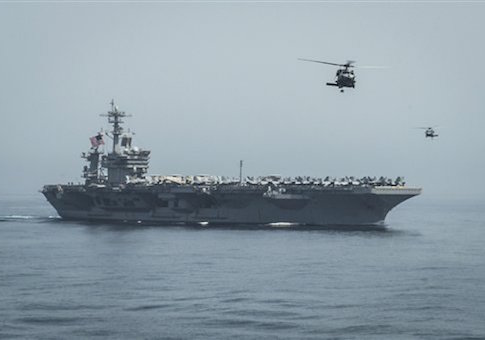For the first time, a Navy official publicly acknowledged that there will be gaps in U.S. aircraft presence in the Middle East and East Asia regions at points next year.
The Hill reported that Navy Vice Adm. John Aquilino told lawmakers at a congressional hearing Tuesday that there will be "some periods" next year in both regions when no U.S. aircraft carrier will be present.
"There are in the next year, some periods similar to what we are seeing in the [Central Command area of responsibility] now," Aquilino told members of the House Armed Services Seapower and Projection Forces Subcommittee.
He also said that "in the next year there will be a similar gap in the [Pacific Command area of responsibility]." Aquilino refused to disclose when or for how long the gaps would take place.
Sean Stackley, an assistant secretary of the Navy, admitted that such gaps in carrier presence "undermine both the U.S. ability to deter conflict and respond to crises."
"Every American president for 70 years has asked, ‘Where are the carriers?’ in the moment of crisis. When our next president asks a similar question, the response may be silence," Stackley said.
According to Navy officials, the gaps in coverage are due to a shortage in available aircraft carriers. The Navy has one less than the 11 carriers it needs to execute missions, and the 11th carrier will not be ready until 2021. Stackley said that the Navy "will be operating at a deficit" until the 11th carrier is ready.
The Navy pulled the USS Theodore Roosevelt from the Persian Gulf last month. As a result, for the first time since 2007, the U.S. has no carrier in the sea. The USS Theodore Roosevelt has played a central role in the Obama administration’s bomb campaign against the Islamic State that began last year in the region.
Its replacement, the USS Harry S. Truman, is expected to take weeks to arrive, leaving as much as a two-month gap period in the region.
There was also a gap in coverage lasting four months in the Asia Pacific earlier this year before the USS Ronald Reagan replaced the USS George Washington, which departed from Japan in May.
"There is no replacement for a carrier strike group in any phase of any type of conflict," Navy Rear Adm. Michael Manazir, the director of air warfare for the Navy, said Tuesday.
